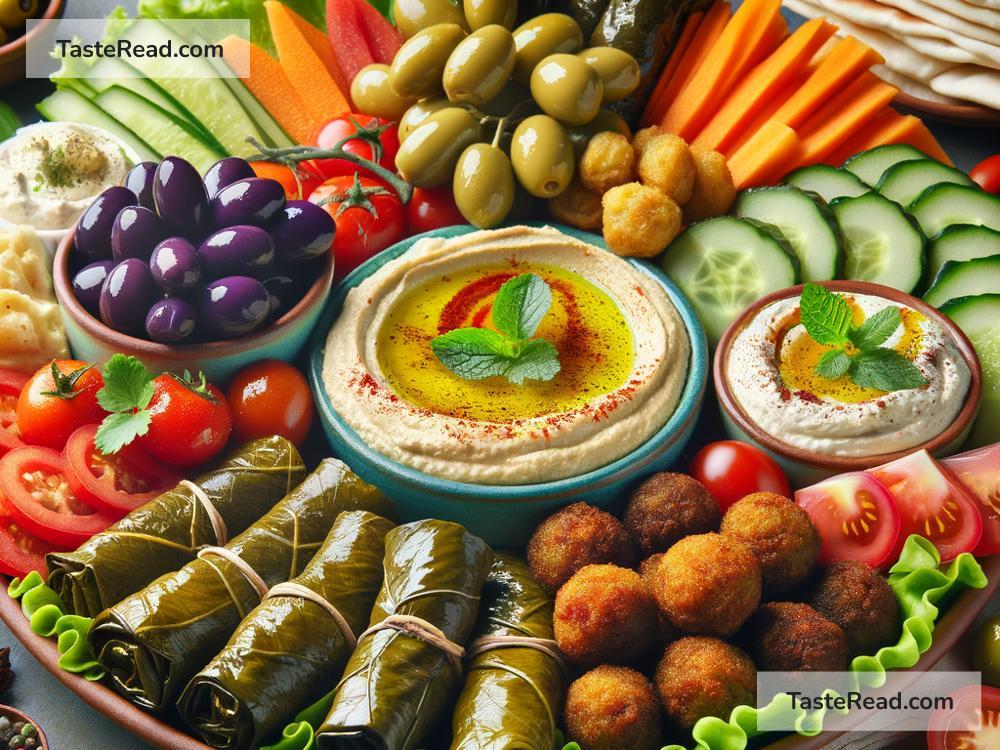How to Make Delicious Middle Eastern Meze Platters
Middle Eastern cuisine is like a treasure chest full of flavors, colors, and textures. It’s rich, it’s vibrant, and it’s wonderfully diverse. A fantastic way to dive into this culinary treasure is by creating a Meze platter. Meze, or mezze, refers to a selection of small dishes served as appetizers or even as a meal itself, especially in the Middle East and the Mediterranean region. Making a delicious Middle Eastern Meze platter is like putting together pieces of a puzzle – each piece is unique but together, they create a stunning picture. Let’s walk through how to prepare a simple yet delicious Meze platter that will wow your guests or make a delightful treat for yourself.
1. Start with Hummus and Baba Ganoush
No Meze platter would be complete without these two dips. Hummus, made from blended chickpeas, tahini (sesame paste), olive oil, lemon juice, and garlic, is creamy and addictively tasty. Baba Ganoush, on the other hand, is a smoky, savory dip made from roasted eggplants, tahini, olive oil, and various seasonings. Both dips are straightforward to make and serve as the perfect starter for your Meze platter.
2. Include Fresh and Pickled Veggies
Middle Eastern cuisine celebrates the freshness and flavors of vegetables. Include a variety of raw vegetables like cucumber, carrots, and bell peppers for that refreshing crunch. Additionally, some pickled or marinated vegetables like olives, pickles, or artichokes can add a zestful kick to the platter, balancing the creamy dips with their crispiness and tang.
3. Don’t Forget the Cheese
Incorporating cheese like Feta or Halloumi adds a lovely saltiness and texture to your Meze. Feta cheese can be served as is or drizzled with olive oil and sprinkled with some za’atar – a Middle Eastern herb mix. Halloumi, distinguished by its ability to hold shape when heated, can be grilled or pan-fried until golden brown and added to the platter for a warm, chewy component.
4. Add Some Protein
To add a hearty element to your platter, consider including some form of protein. For simplicity, falafel – deep-fried balls made from ground chickpeas or fava beans mixed with herbs and spices – are a great option. Additionally, grilled meat skewers (kebabs) or kibbeh (Lebanese meatballs) can also be prepared in advance and served cold or reheated before serving.
5. Bread and More
A Meze platter is incomplete without bread. Pita bread, soft and pillowy, is traditional and can be used to scoop up dips or wrap around other components of the Meze. For a little twist, try serving za’atar-sprinkled flatbreads or crispy lavash. Adding a side of olive oil mixed with za’atar for dipping the bread enhances the experience.
6. Garnish and Serve
Finally, before serving, garnish your Meze platter with fresh herbs, nuts, or pomegranate seeds to add color and an extra layer of flavor. Fresh mint, parsley, or a handful of walnuts or almonds can beautifully elevate the look and taste of your platter. Drizzle some olive oil over the dips, and maybe a sprinkle of paprika for a pop of color and mild heat.
Tips for Success
- Balance is key. Make sure you have a mix of creamy, crunchy, fresh, and savory items.
- Go for color. A visually appealing platter is nearly as important as the taste. Use colorful vegetables and garnishes to make your Meze platter vibrant.
- Season properly. Don’t forget to season your dishes well. The flavors should be bold but balanced.
- Prepare in advance. Many Meze items can be made in advance. Spread out the prep work to avoid being overwhelmed.
Creating a Middle Eastern Meze platter is an enjoyable and creative process. It presents an opportunity to explore a variety of dishes and flavors, making it a perfect option for gatherings or a special family meal. Remember, there are no strict rules – feel free to add your personal touch and preferences to the platter. Happy cooking, and enjoy the delightful journey through Middle Eastern cuisine!


